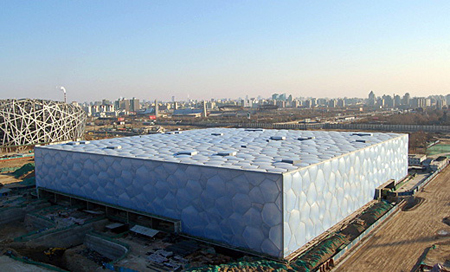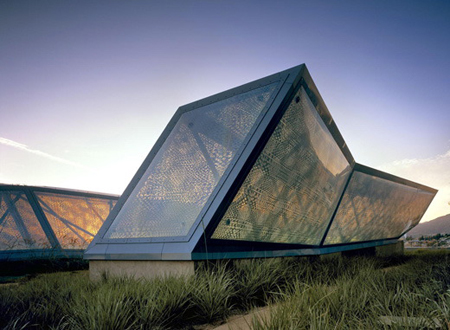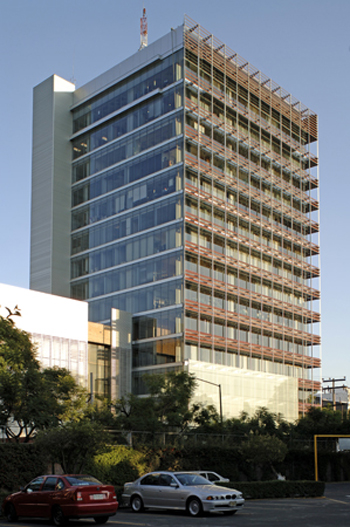
Return visitors to the site might recall the work of Pascal Arquitectos [check out our previous posts] as features on architecture.mnp. Today we feature another project by the firm, where they’ve transformed a 25 year old office building’s façade – not only giving it a more contemporary look and feel, but also turning an hermetically sealed building from the ’70’s ‘green’.
Project: Pascal Arquitectos. Carlos Pascal & Gerard Pascal
Construction: Pascal Arquitectos – M.Guindi
Date: 2003
Address: Av. Ejercito Nacional, Mexico City
Photography by: Jaime Navarro
The intervention in this 25 years old building ascribes to the damaged materials and the necessity keep up with the new thermo-acoustic requirements of the area. To accomplish this objective a passive but high effective energy saving façade was adapted. The target was to restore the building with a modern image with the evident utilization of new technologies.
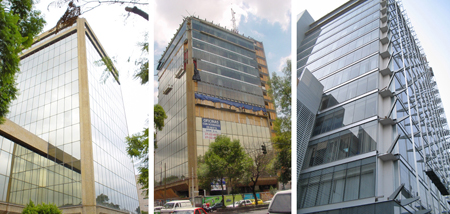
Logistics were very complex because the complete restoration had to be made without emptying the offices. Physical determining factors were sort out building an hermetic façade and placing a double aluminum façade with horizontal melaminized over sized wood louvers that blocks the sunlight, and laminated glass with a polyvinyl film in order to fulfill the thermo-acoustic requirements.

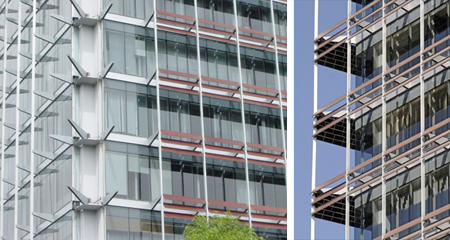
These louvers where set up over the aluminum contours anchored in the structure by steel cantilevers, with 1.22 m distance from the façade.
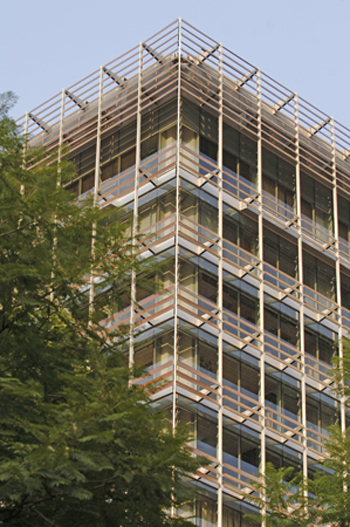
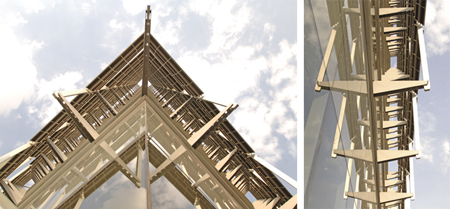
In the the vertical joints a common node was utilize in order to ease to the displacement of each part and to absorb, at the same time, the movements generated by earthquakes or by the building natural auto compression.

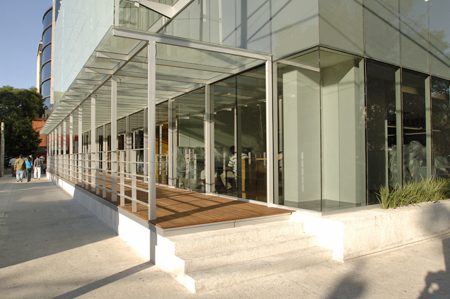
On the main floor, in a section of the ground that was practically given away to the public way, a veranda was built achieving the integration of the level and transforming it into a private and commercial area.

Ed Note : Our thanks to our friends over at Pascal Arquitectos [Amanda Balconi in particular] for sharing their work with architecture.mnp – if your firm would like to publish work through the site, don’t hesitate. Register here to submit your work , or email us at architecture[at]myninjaplease[dot]com.
::all images and text [other than introductory paragraph] courtesy of Pascal Arquitectos::


















